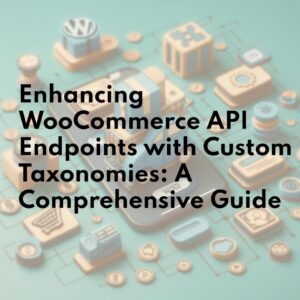Restricting Specific countries Purchases on Your WooCommerce Store
Posted on by ChandanIn the dynamic landscape of the modern global marketplace, eCommerce has shattered traditional geographical limitations, enabling businesses to cater to clientele across the globe. Nonetheless, situations arise that demand the implementation of precise country-based regulations for your digital storefront.
Within this all-encompassing guide, we will dissect a PHP code snippet meticulously crafted to constrain transactions originating from a specific list of countries within a WooCommerce establishment. Our systematic dissection of the code, accompanied by detailed explanations of its constituents, aspires to equip you with profound insights into the art of adeptly administering purchases contingent on the geographic origins of your site visitors.
Code Explanation
- is_european_country($country): Decoding the Country Check: The is_european_country function serves as the foundation for our code. Its role is to determine whether a given country falls within the European region. To accomplish this, it compares the provided country against a list of European countries. Using the in_array PHP function, the function checks for a match. This list covers countries from the well-known, like France and Germany, to smaller nations like Monaco and Liechtenstein. This systematic approach ensures accurate identification of European countries, forming the basis for subsequent actions.
- get_visitor_ip_info(): Navigating IP-based Visitor Insights: In today’s online landscape, understanding visitor demographics is key for tailoring user experiences. The get_visitor_ip_info function addresses this need by gathering information about the visitor’s IP address. It creates a specific API URL by adding the visitor’s IP to the base URL and requesting only ‘status’ and ‘country’ fields. Using the WordPress function wp_remote_get, which handles HTTP requests, the function fetches the API response. If the response is successful, the function unserializes the response body, making it structured data. This allows extraction of valuable IP info, providing insights into the visitor’s geographic location.
- disable_european_purchases(): Orchestrating Purchase Restrictions: At the heart of the code lies the disable_european_purchases function. It brings together the earlier functions to control purchases from European countries. After calling get_visitor_ip_info, the function retrieves the visitor’s country. If IP info is obtained and the country is confirmed as European using is_european_country, specific actions are taken to disable purchasing for that visitor. The code utilizes remove_action to disable adding products to the cart on shop and product summary pages. Moreover, it uses add_filter to adjust product purchasability, effectively preventing European customers from completing purchases.
- add_action(‘wp’, ‘disable_european_purchases’): The final piece of the puzzle is this line of code, seamlessly incorporating the disable_european_purchases function into WordPress. By adding the function to the ‘wp’ action hook, the code ensures execution during WordPress initialization. This strategic timing guarantees that purchase restrictions are promptly applied and enforced.
Advantages and Considerations
- Accuracy and Data Reliability: One of the IP-API’s notable advantages is its provision of relatively accurate and reliable geolocation data. While IP-based geolocation isn’t always pinpoint precise, it provides a solid foundation for determining a visitor’s country. This level of accuracy is sufficient for implementing broad restrictions such as the ones demonstrated in the code. It’s important to note that the accuracy might vary depending on factors such as IP address allocation and visitor usage patterns.
- API Evolvability and Alternatives: As with any external service, the IP-API might evolve over time, introducing updates, changes in endpoints, or modifications to the data structure. To ensure continued functionality, periodic checks and updates to the code might be necessary. Moreover, the world of geolocation APIs offers a variety of alternatives, each with its own strengths and limitations. Depending on your specific requirements, you might explore alternative services that provide more comprehensive data or improved accuracy.
Customizing and Adapting the Code for Your WooCommerce Store
The utility of the presented code snippet surpasses its immediate application, offering you a versatile tool for customization and adaptation to meet specific business demands or legal requisites. This adaptability proves especially beneficial when you contemplate modifying the roster of European countries subject to restrictions or exemptions. Moreover, an avenue to refine the process of acquiring IP information exists by seamlessly integrating alternative APIs that provide more comprehensive and contemporaneous data.
Extending Beyond European Constraints
The framework of this code serves as a robust foundation not only for enforcing European limitations but also for instituting other location-based regulations. By delving into the intricacies of the code and grasping its mechanisms, you empower yourself with the ability to adjust its behavior to suit varying geographical zones. It remains prudent to remain vigilant about potential shifts in external APIs and services, recognizing that periodic updates to the code may be imperative for maintaining sustained functionality.
Concluding Insights
The prowess to implement purchasing constraints tailored to specific regions is an invaluable capability that resonates with online store proprietors. The impetus behind such measures encompasses an array of considerations encompassing legal compliance, taxation implications, and the finesse of localized marketing strategies. The elucidated code snippet, featured within this comprehensive guide, furnishes a holistic approach to curbing purchases originating from European nations within the WooCommerce ecosystem. Our meticulous dissection of the code’s functions and their intricate interplay confers a steadfast grasp of their implementation.
Armed with this insight, you’re equipped not just to adeptly enforce European purchasing limitations, but also to proactively adapt the code to accommodate diverse global factors. As you navigate through this guide, bear in mind that maintaining a pulse on the ever-evolving landscape of eCommerce necessitates ongoing exploration and learning. By synergizing technology and strategic acumen, you’re poised to cultivate an online shopping experience that harmoniously aligns with your business objectives, seamlessly addressing the diverse expectations of your discerning customer base.




Leave a Reply